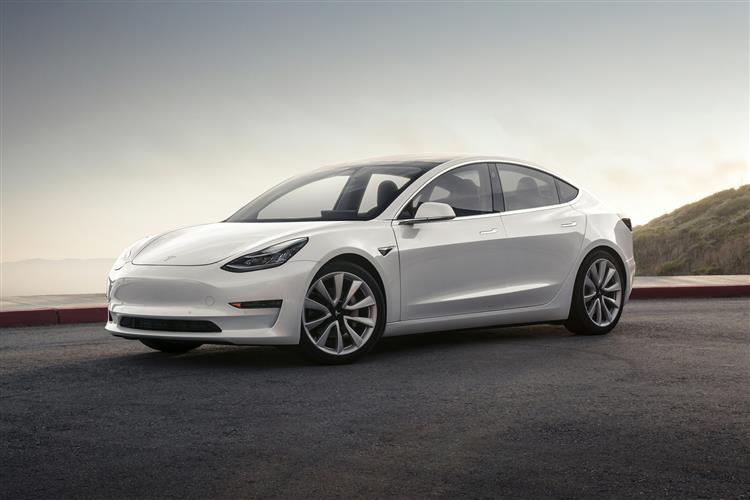While having the option of running a company car is still one of the most popular business perks in the UK, the pitfalls of choosing the wrong one can prove to be hugely expensive.
While the number of company car drivers has fallen steadily across the country over the past few years, there are still nearly 900,000 company cars on the road today. Those drivers – and prospective company car drivers – are now discovering that following significant recent changes in the way the Government assesses how cars are valued for taxation purposes, there can be a huge difference between a small or a horrendous tax bill depending on the car you opt for.
The good news is that to incentivise drivers to go green, low emission electric cars have been given massive exemptions in the scheme that judges how they will be taxed. So there has never been a better time for company car drivers to consider switching to an electric car business lease.
So What Exactly Is A Benefit In Kind Band? How To Calculate A Car's P11D Value How Does An Electric Car Compare To Traditional Car Tax? Electric Company Car Tax Calculator
How Is Company Car Tax Calculated?
How much company car tax you’ll pay depends on several factors: what you earn (and the tax bracket you fall into), the cost of the car itself, and the amount of carbon dioxide coming out of its exhaust.
In other words, if you’re a 40% or 45% taxpayer driving an expensive gas-guzzler your tax bill will be higher – much higher – than if you opt to drive a zero emissions, pure electric car – even one with the same list price as a petrol version.
It’s even more punitive for diesel drivers, whose ‘NOx’ emissions are penalised further, with most diesels being hit with an additional tax surcharge compared to even their petrol counterparts.
Whatever car you’ve chosen, the taxman judges that any private usage of a company car – even commuting from home to the office – is classed as a perk and refers to it as a Benefit in Kind. That benefit is then assessed to be taxable and a formula is applied to calculate just how big a perk you have been judged to have been given and hence what tax you will need to pay.
The first part of the formula works out the car’s ‘P11D’ value, so-called because it is declared on your annual P11D form given to you by your employer to inform the tax office of the cash value of any benefits you’ve received that year.
To calculate the P11D value of a car, the taxman takes the sum of its list price, the cost of delivery, VAT and any optional extras (but doesn’t include road tax or first-year registration fees) and multiplies it by a Benefit in Kind band percentage, which is determined by its CO2 emissions.
So What Exactly Is A Benefit In Kind Band?
To give each car a taxable value based on how polluting it is, the government applies a BIK rate according to its CO2 emissions. That means the very cleanest cars – the zero emissions electric models – attract incredibly low BIK percentages (0% in 2020, 1% in 2021 and 2% until 2025. The biggest polluters are, conversely, hit with much higher rates.
To help you work out what your car's BIK rate is, the table below shows how much emissions a car produces (left column) and then its taxable rate for the next five years.
As you can see, an electric car with either zero CO2 emissions (or an all-electric range in excess of 130 miles) will attract just a 1% BIK rating in 2021/22 and never more than 2% for the three years that follow.
Compare that to a high emissions car generating in excess of 150g/km of CO2. From the get-go, you will incur a BIK rate in excess of 33% and even as high as 37%.
Cars Registered From 6 April 2020:
|
CO2 (g/km) |
Electric range (miles) |
2020-21 (%) |
2021-22 (%) |
2022-23 (%) |
2023/24 (%) |
2024/25 (%) |
|
0 |
N/A |
0 |
1 |
2 |
2 |
2 |
|
1-50 |
>130 |
0 |
1 |
2 |
2 |
2 |
|
1-50 |
70-129 |
3 |
4 |
5 |
5 |
5 |
|
1-50 |
40-69 |
6 |
7 |
8 |
8 |
8 |
|
1-50 |
30-39 |
10 |
11 |
12 |
12 |
12 |
|
1-50 |
<30 |
12 |
13 |
14 |
14 |
14 |
|
51-54 |
|
13 |
14 |
15 |
15 |
15 |
|
55-59 |
|
14 |
15 |
16 |
16 |
16 |
|
60-64 |
|
15 |
16 |
17 |
17 |
17 |
|
65-69 |
|
16 |
17 |
18 |
18 |
18 |
|
70-74 |
|
17 |
18 |
19 |
19 |
19 |
|
75-79 |
|
18 |
19 |
20 |
20 |
20 |
|
80-84 |
|
19 |
20 |
21 |
21 |
21 |
|
85-89 |
|
20 |
21 |
22 |
22 |
22 |
|
90-94 |
|
21 |
22 |
23 |
23 |
23 |
|
95-99 |
|
22 |
23 |
24 |
24 |
24 |
|
100-104 |
|
23 |
24 |
25 |
25 |
25 |
|
105-109 |
|
24 |
25 |
26 |
26 |
26 |
|
110-114 |
|
25 |
26 |
27 |
27 |
27 |
|
115-119 |
|
26 |
27 |
28 |
27 |
27 |
|
120-124 |
|
27 |
28 |
29 |
29 |
29 |
|
125-129 |
|
28 |
29 |
30 |
30 |
30 |
|
130-134 |
|
29 |
30 |
31 |
31 |
31 |
|
135-139 |
|
30 |
31 |
32 |
32 |
32 |
|
140-144 |
|
31 |
32 |
33 |
33 |
33 |
|
145-149 |
|
32 |
33 |
34 |
34 |
34 |
|
150-154 |
|
33 |
34 |
35 |
35 |
35 |
|
155-159 |
|
34 |
35 |
36 |
36 |
36 |
|
160-164 |
|
35 |
36 |
37 |
37 |
37 |
|
165-169 |
|
36 |
37 |
37 |
37 |
37 |
|
170+ |
|
37 |
37 |
37 |
37 |
37 |
How To Calculate A Car's P11D Value
To calculate a car’s P11D value you take its price including optional extras and delivery.
To calculate the BIK you multiply the P11D by the CO2 emission band for the tax year that you are in.
To calculate exactly how much company car tax you will be liable for, you can use the company car tax calculator on HM Revenue & Customs website. HM Revenue & Customs’ website.
We’ll give you a working example here:
• A car that has an ‘all-in-cost’ (or P11D value) of £50,000 and produces zero emissions would attract a BIK rate of just 1% in the 2021 / 22 tax year • That means its BIK value would be declared as 1% of £50,000 or £500 • Your actual tax bill is then calculated by multiplying the BIK value by your personal income tax band. So a 40% taxpayer would pay 40% of £500, or £200 in that year
All of which makes the case for running an electric car as a company car incredibly compelling.
Particularly when you do the same maths with a combustion-engined car with that emits high levels of CO2…
Take a £50,000 petrol car with 150g/km CO2 that falls into the 33% BIK band for 2021/22.
Which means its BIK value will be declared as 33% of £50,000, or £16,500. The same 40% income taxpayer would therefore have to pay 40% of £16,500 in that tax year for the privilege of driving their higher polluting machine. That means a tax bill in 2021/22 of £6,600.
How Does An Electric Car Compare To Traditional Car Tax?
So the difference between electric and traditional cars is stark. A monthly tax bill for a £50,000 electric car of just £16.67 versus a £550 monthly bill for a similarly priced petrol version.
Over the average three-year lifespan of a lease that will add up to many, many thousands of pounds. The business case for going electric has never been clearer…
Loving the sound of the benefits but not sure which model to go for? Take a look at our guide to the best electric cars for business leasing.




